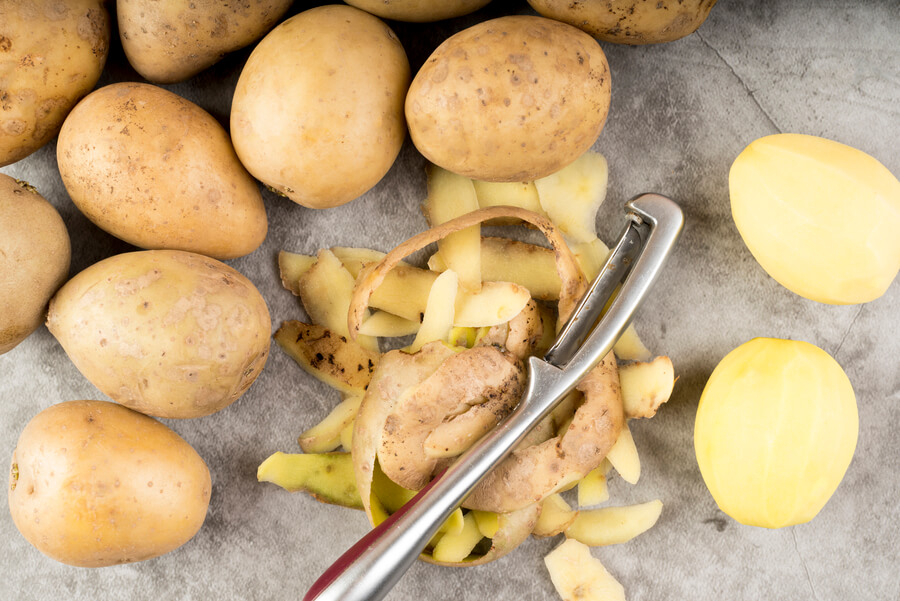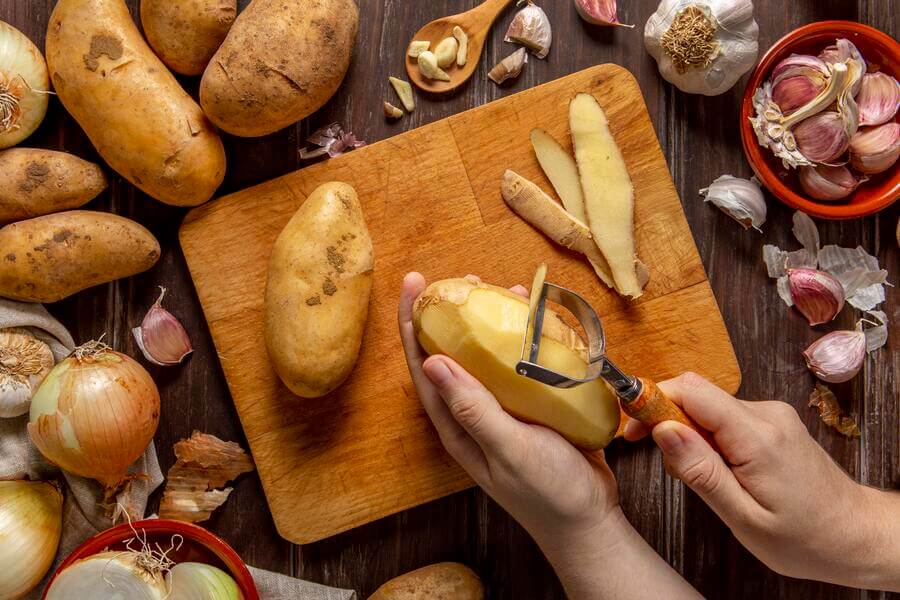Once or twice, your potato peeler has been a lifesaver. It has saved you the stress of chopping and slicing vegetables by hand. But, once the blade becomes dull, it can be challenging. Sharpening your potato peeler is not rocket science.

It is a simple process. It doesn’t require any advanced skills or specialized tools. This is a simple maintenance task that can significantly improve the efficiency of your potato peeler.
Why Do You Need to Sharpen Your Peeler?
A sharp peeler will glide through food with ease. You can peel or slice ingredients quickly, which saves you time while preparing your food. With a sharp peeler, you can achieve consistent and precise cuts.
This is especially important for situations where your dishes need to be presentable. Besides, for safety’s sake, a sharp blade is safer than a dull one. When using a sharp peeler, you’re less likely to exert excessive force. This reduces the risk of accidental cuts.
Step-by-step Guide on How to Sharpen Your Potato Peeler
Here’s a step-by-step guide on how to perfectly sharpen your potato peeler.
Gather Your Tools
These are the essential tools and materials for sharpening your potato peeler.
- Prepare the dull potato peeler you want to sharpen.
- Get a fine-grit sandpaper
You’ll typically need sandpaper with a grit between 600 and 800. This is used to remove a small amount of material from the blade to sharpen it.
- Prepare a Stable Surface
You’ll need a stable, flat surface to place the sandpaper on. The stable surface could be like a wooden block or countertop.
- Honing Rod or Sharpening Stone
You can choose between a honing rod (otherwise known as a sharpening steel) or a sharpening stone. Both are effective for sharpening, although optional. A honing rod can be used to further refine the edge of the peeler after using sandpaper.
If you’re using a sharpening stone, you may need a lubricant or honing oil. It could be water or oil to keep the stone’s surface wet and to prevent the blade from overheating.
- Leather Strop or Cardboard
This is also optional, and it can be used for the final refinement of the blade.
- Cleaning Materials
You may need a cloth or paper towel to clean the peeler and remove metal shavings.
Prepare the Surface
Find a stable surface to work on, like a wooden block or countertop. Place the peeler on a durable surface. It could be a countertop or a cutting board. Make sure the surface is secure and does not wobble during the sharpening process.
Adhere to the necessary safety precautions. Keep your fingers and hands away from the blade, and be cautious while handling the tools. Place a piece of fine-grit sandpaper on the surface with the grit side up.

Inspect the Peeler
Examine the peeler for any significant nicks or damage. This will help you determine if it is simply blunt and needs to be sharpened or unsalvageable. If the peeler is severely damaged, it may not be salvageable.
Carefully run your fingertip lightly along the blade to feel for any burrs or dull spots. If the knife is dull, you’ll feel the irregularities. Inspect the edge for any signs of rust hindering the sharpening process.
Position the Peeler Properly
Keep a correct angle between the blade and the sharpening tool of choice. Typically, the peeler should be at a 20-30 degree angle to the sandpaper. The cutting edge should be in contact with the sandpaper.
A steady grip is essential in this instance. Hold the handle of the peeler firmly so it doesn’t slip or move during sharpening. Moreover, a consistent angle ensures that you sharpen the blade evenly.
Proceed to Sharpen the Peeler
With gentle pressure, move the peeler across the sandpaper in one direction. Use a consistent angle and apply even pressure. If you’re using the honing rod, start at the base of the blade.
Draw the peeler across the honing rod in a slicing motion. Move from the base to the tip of the blade. You can refine the edge by gently running the peeler’s blade along the rod. It’s similar to sharpening a knife. If you’re using the sharpening stone, In a controlled motion, move the blade across the stone. Also, start from the base and work toward the tip.
Repeat this process several times on both sides of the blade until you’re sure it’s sharper and smoother.
Test at Different Periods
After sharpening, carefully wipe the blade clean. After a few strokes, test the sharpness. You can do this by peeling a potato or another vegetable. If the peeler easily removes thin, even strips without tearing or resistance. Continue sharpening until it’s adequately sharp.
Clean and Strop
After sharpening, thoroughly clean the peeler. Wipe the blade clean with a damp cloth. This would remove any metal shavings, sharpening residue, or debris that might have amassed during the sharpening process.
Remove any metal shavings from the peeler. You can also use a leather strap or a piece of cardboard for this. This would further refine the edge of the blade. Hold the strop or cardboard firmly on a stable surface.
With the peeler blade facing away, make a few gentle passes along the strop or cardboard in the same direction as when you sharpened the blade earlier.
Finally, Test the Peeler
Test the peeler by peeling a potato or any other vegetables. All things being equal, It should now cut smoothly. It might take a bit of practice to get the hang of the process, but once you do, it’ll come quickly to you.

Tips for Keeping Your Potato Peeler Sharp
Once you’ve sharpened your peeler, it is essential that you also maintain its sharpness.
- Always rinse and clean the potato peeler immediately after using it. The starchy residue can dull the blade over time. To keep the peeler sharp, rinse and dry it after use to prevent rusting.
- Hand wash your peeler. Avoid putting it in the dishwasher, as the increased heat and chemicals can damage the blades and the handle.
- After washing, make sure to dry the peeler completely. This would prevent rust or corrosion.
- Always store properly. You can keep your peeler in a knife block, utensil drawer, or on a magnetic strip. This would prevent it from getting damaged in the clutter of your kitchen.
- Although potato peelers are designed for foods like potatoes, avoid using them on more complicated items. This can cause the blade to chip or become dull.
- Sharpen your peeler regularly. You can keep it sharp using a honing rod or a sharpening stone. You can follow the steps as discussed above.
- Once your peeler becomes irreparably dull or damaged, it’s better to replace it. This is better than struggling with an inefficient piece of equipment.
- Consider using a blade guard when storing your potato peeler. This would protect the blade and also your hand.
Remember, safety is vital when sharpening any tool. Avoid cutting yourself during the process, and always work in a well-lit area. Once you follow these maintenance tips, your potato peeler will stay sharp and efficient for a long time.
